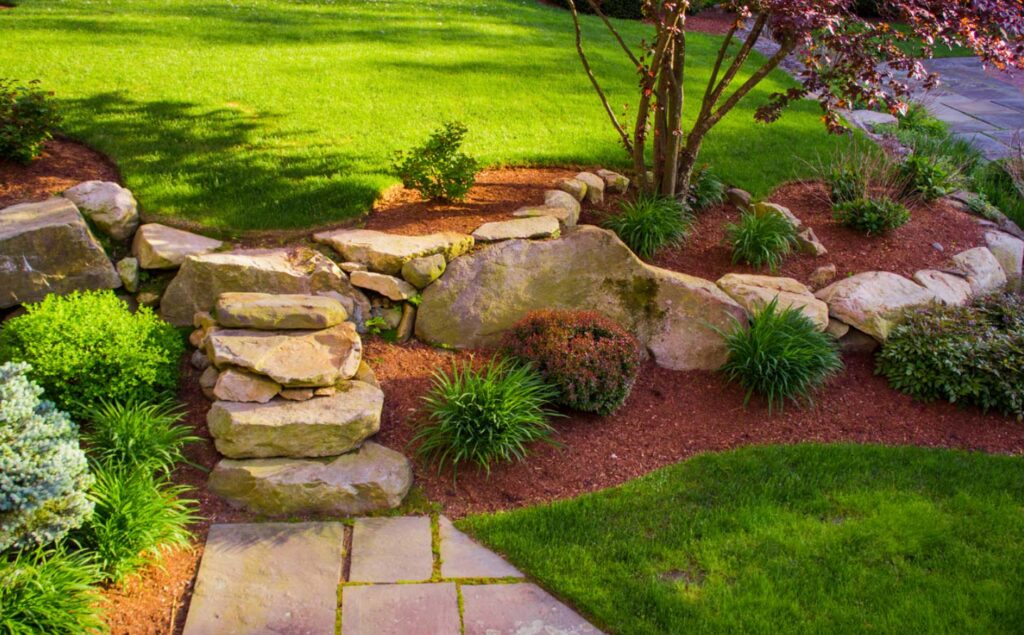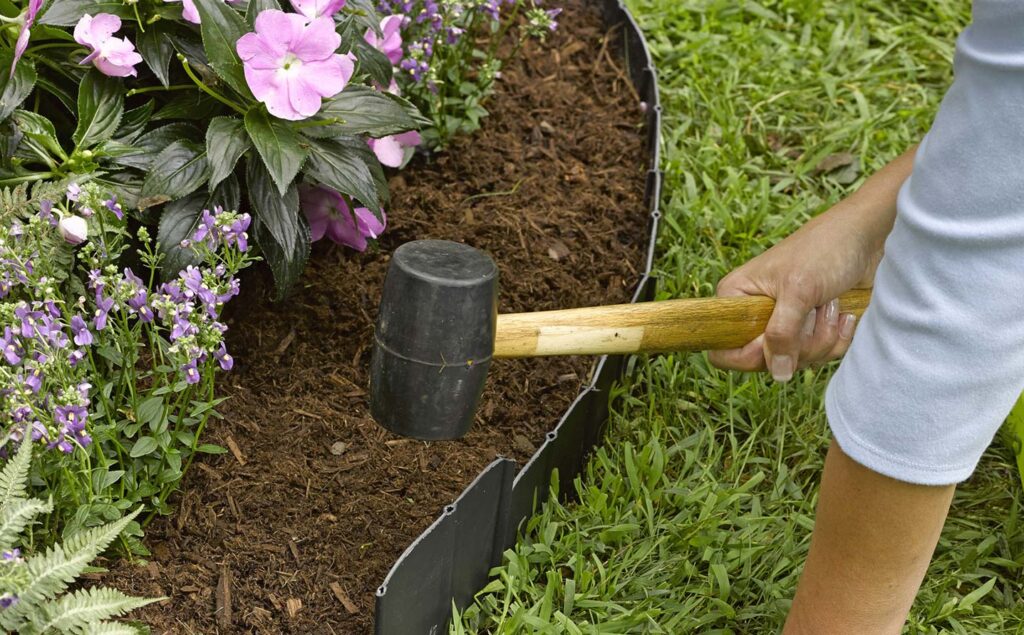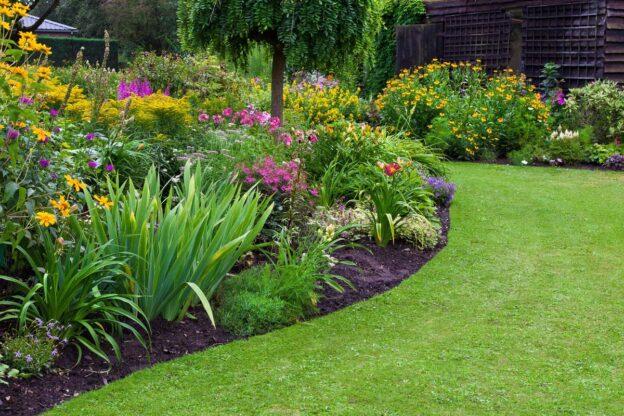So you’ve placed a nice new walkway in front of your house. It looks great – clean, crisp, and appealing. However, you then realize that you have a small problem. This problem is that the mulch you use for your landscaping is migrating onto your new walkway. What will you do?
As it turns out, edging is what you’ll do. Here are a few edging techniques to help you remedy the issue.

Landscape Rocks
Landscape rocks are one of the easiest ways to protect your walkway from mulch. Landscape rocks are, essentially, large rocks that can be used to create a barrier between two areas. They can range in size from medium to large depending on your preferences and vary in shape and color.
Often, suitable rocks can be found at the river or lake. They can also be purchased from landscaping stores.

Plastic Edging
Plastic edging is an inexpensive edging option. This option is effective at containing mulch because it is installed a few inches into the ground and has a plastic, often rounded and tube-like, a lip that sits on top of the ground. This lip makes a good barrier.
Plastic edging is easy to install and one of the cheaper options. However, the drawback is that it won’t contain large amounts of mulch, only a few inches of mulch.
Precast Concrete Edging
The precast concrete edging looks great but can be expensive. It goes well with curved many beds and can change the appearance of space with ease.
This type of edging is, as its name suggests, concrete. The concrete has been pre-molded and shaped and can be laid along the edges of your mulch to keep it in its desired area. It can be made into a wide variety of shapes, ranging from rounded structures to crisp blocks and everything in between.
As we said though, it can be expensive since it’s made of pure concrete.
Rhizome Barriers
Rhizome barriers are the most labor-intensive type of edging on our list. In fact, for shallow or very small areas, this kind of barrier is probably overkilling. For large or extremely deep areas, though, it works wonders.
It requires the digging of a trench roughly three feet deep. Leave the top six inches of rhizome barrier above the ground to contain your mulch. In terms of appearance, these barriers look a lot like basic plastic edging.

Wooden Timbers
Wooden timbers are another inexpensive option. They are ideal for areas without curves or bends and can come in a variety of lengths. The only problem with these, though, is that they sometimes need to be replaced – especially if you live in an area that is prone to heat and moisture, a combination that can cause wood to rot.
Wooden timbers can be used for curved areas, however, they will need to be made into smaller pieces in order to accommodate the bend. This can be a hassle when it comes to installation.
Metal Edging
Metal edging is a modern take on the edging. There are types of stiff metal that can be used as good edging for mulch; this metal can be customized into a number of fun shapes and is a durable option. Some metal edging is available in rolls, which means it is more flexible and better suited for curved areas.
